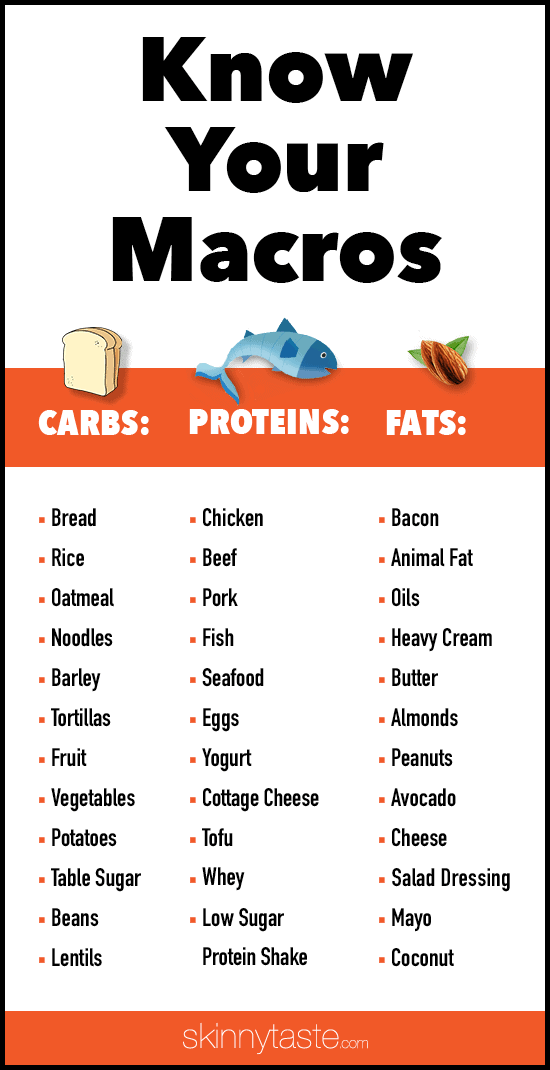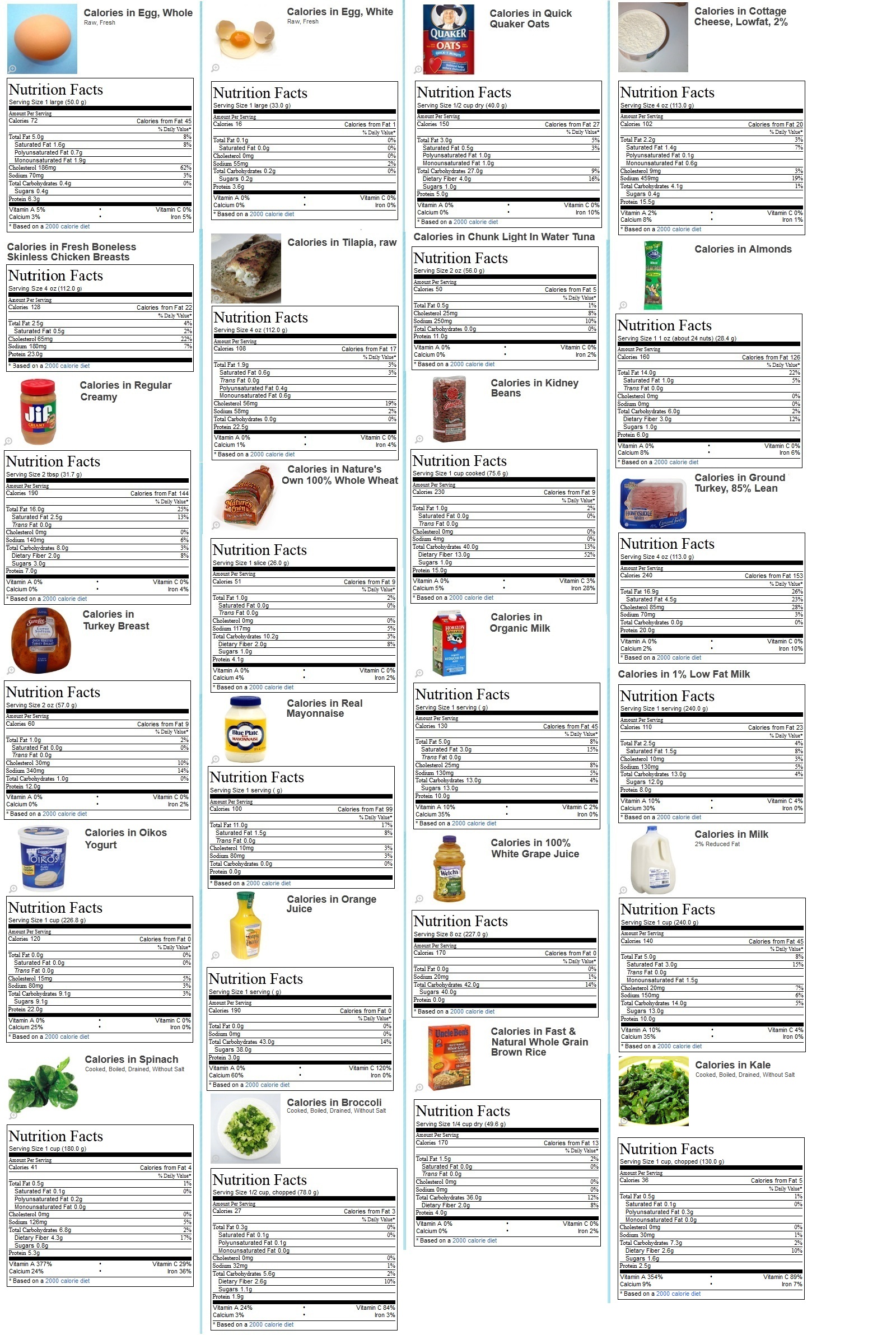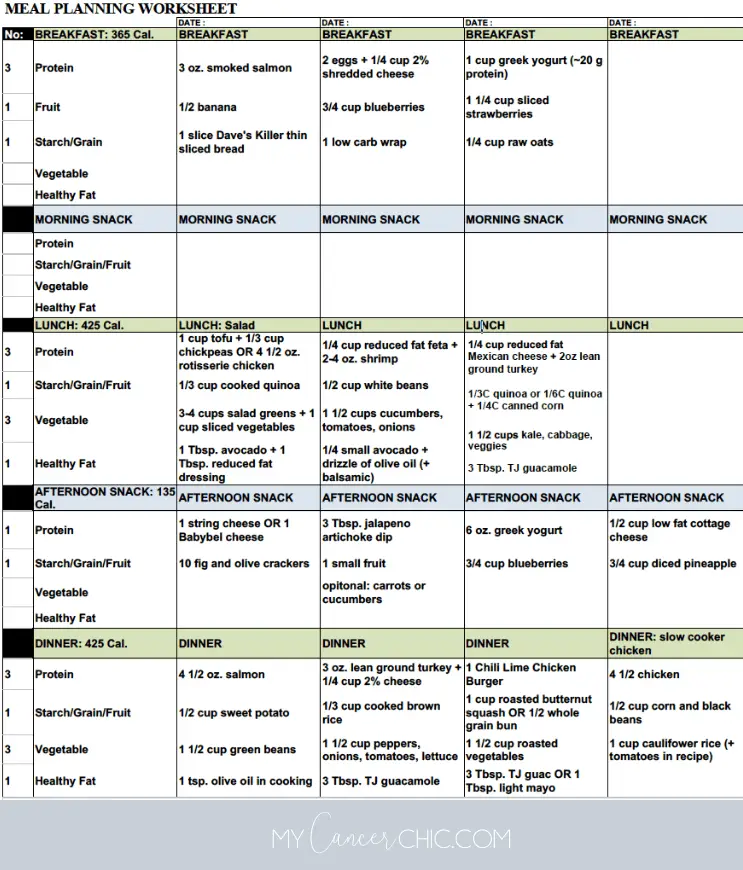
Pin on Diet
The three macros are protein, fats, and carbohydrates. Each macro is measured in grams and provides energy (calories). (See table below) Macronutrient. Calories per gram. 1 gram of protein. 4 calories. 1 gram of carbohydrate. 4 calories.

Pin on Healthy
Macronutrients are the main nutrients groups found in food that provide us energy (calories). The three macronutrient groups are: Protein. Carbohydrates. Fats. Each of these macronutrients has a caloric value: Protein has 4 calories per 1 gram. Carbohydrates have 4 calories per 1 gram. Fat has 9 calories per 1 gram.

Macro Cheat Sheet "Just Tell Me What to Eat!" by Own Your Eating
If you exercise for an hour or less daily: 30% protein, 30% fat, 40% carbs. If you exercise for one to two hours daily: 30% protein, 25% fat, 45% carbs. If you exercise for more than two hours.

Pin by Stevie on Food Food tracking, Macros diet, Flexible
When choosing macro-friendly snacks, a good rule of thumb is that each snack includes a source of protein and one other macronutrient. Apple slices with almond butter. Celery sticks with peanut butter. Greek yogurt and berries. Hard-boiled egg and carrots. Trail mix (nuts, seeds, dried fruit) Hummus and veggie sticks.

What are Macros? Skinnytaste
So, a 170-pound nutrition beginner who's lightly active and wants to lose fat might choose the factor 0.8 g/lb from the range 0.7 to 1.0. 170 pounds x 0.8 = 136 grams of protein / day. A highly active 165-pound experienced lifter who wants to gain muscle might choose the factor 1.2 g/lb from the range 1.0 to 1.3.

Pin on Fitness
Counting macros may support weight loss, improve diet quality, and help you reach certain health-related goals. It involves determining your nutrient needs and using a food journal or app to track.

Quick Macros Cheat Sheet More Dieta Macros, Macros Diet, Excel Macros
Macro is short for macronutrient, "a chemical element or substance (such as potassium or protein) that is essential in relatively large amounts to the growth and health of a living organism," according to Merriam-Webster. The ones that people think about the most, with regard to weight loss and weight gain, are carbohydrates, protein, and fat.

Here's the Skinny on Macros
Your macro count is based on your style of diet. For example, the USDA suggests that an adult derive 45 to 65 percent of calories from carbohydrates, 20 to 35 percent from fat, and 10 to 35.

Quick macros guide (image) for building diets.
But don't think that just because a macro-based approach is "flexible," it's perfect. It has advantages and drawbacks like any other nutritional approach. Advantages of macro-focused nutrition: Can be customized to athletic and fitness goals; Helps objectively compare different meals and foods; Reflects food quality better than calories alone

Easy Macros Food List 2024 AtOnce
For a 2,000-calorie diet, this comes out to at least 400 calories from fat. You then divide this fat calorie number by the number nine, since there are 9 calories in every 1 g of fat. For a 2,000-calorie diet with 20% (400 calories) coming from fat, this equals a minimum of at least 44 g of fat per day.

IIFYM Macros Chart Guide on What to Eat
Macronutrients. The three primary macronutrients are carbohydrates, fat, and protein. Carbs fuel your body with immediate energy. Protein provides amino acids, which are essential for building muscle, skin, blood, and important structures of the brain and nervous system. And fat is vital for brain development, insulation, energy reserves, cell.

Flexible Dieting Tips IIFYM The Ultimate Macro Cheat Sheet
Lean Protein. Opting for lean protein sources leaves room in your diet for nutrient-dense, whole food sources of healthy fats, such as avocado. Chicken breast. Turkey breast. Fish (such tuna, tilapia, and cod) Shrimp. Lean beef (such as sirloin or flank steak) Pork tenderloin. Egg whites.

Fruit Macros Chart for counting Macros for Fat Loss Nutrition Program
This ultimate macro calculator takes a complete and comprehensive look at your life to provide a personalized nutrition recommendation. It takes into account: Personal details (height, age, weight, sex) Physical activity levels (both daily movement and purposeful exercise) Nutrition and fitness goals (weight loss, muscle gain, body.

Tracking Macros for Beginners The Ultimate Guide (2022)
Beef heart: 5 g protein and 1 g fat per ounce. Ground bison: 6 g protein and 3 g fat per ounce. Bacon: 3 g protein, 3 g fat per slice. Salmon: 6 g protein and 3 g fat per ounce. Eggs: 6 g protein and 5 g fat per average chicken egg. Butter: 12 g fat per tablespoon. Tallow and lard: 14 g fat per tablespoon.

Pin on Wellness/Nutrition
A macro diet involves counting the intake of three macronutrients — proteins, fats, and carbohydrates. It divides daily calories into proportions, such as 10-35% proteins, 20-35% fats, and.

New to Tracking Your Macros!?!? Here’s a Cheat Sheet to help you know
The general consensus on the ratio of macros for a healthful diet is (3, 4): Protein — 10-30%. Fat — 25-35%. Carbohydrates — 45-65%. But this is not a golden rule. Tweaking the ratio to fit health conditions or fitness goals is normal.